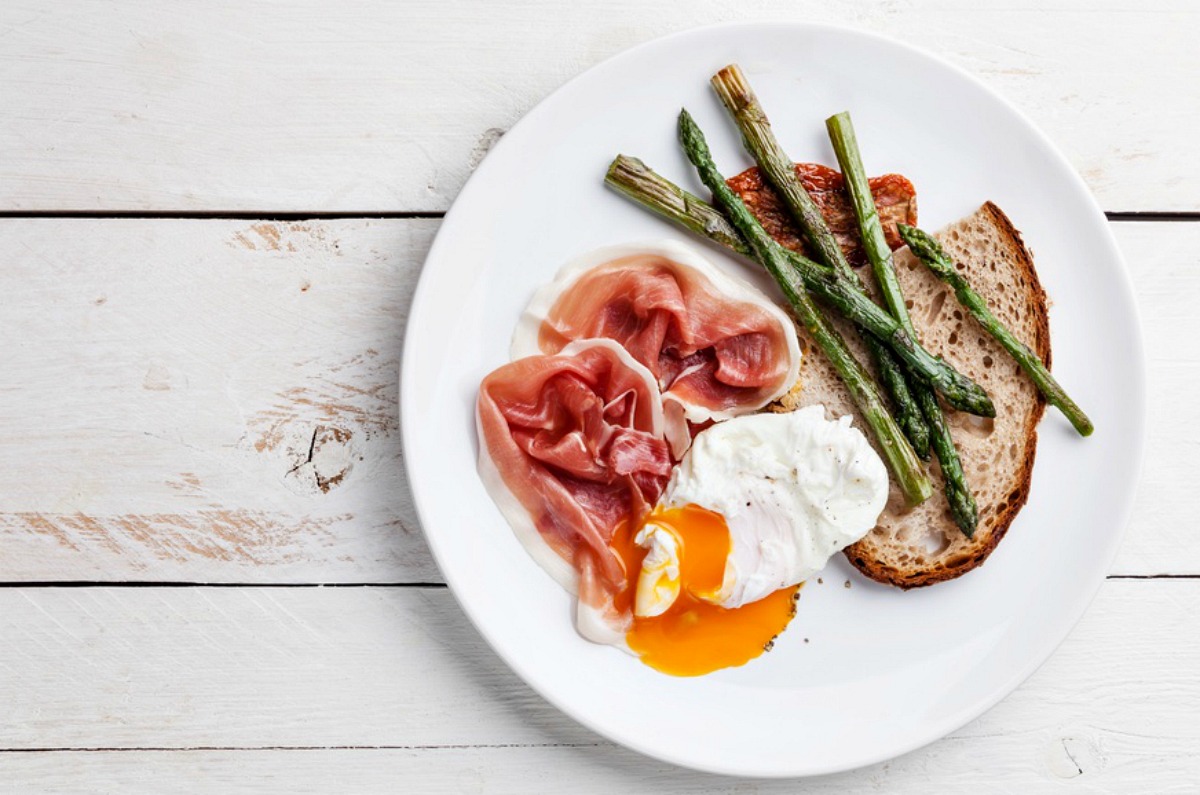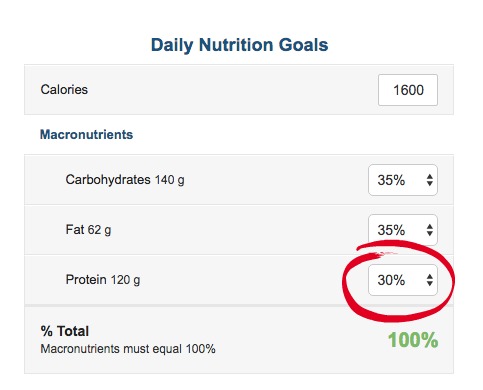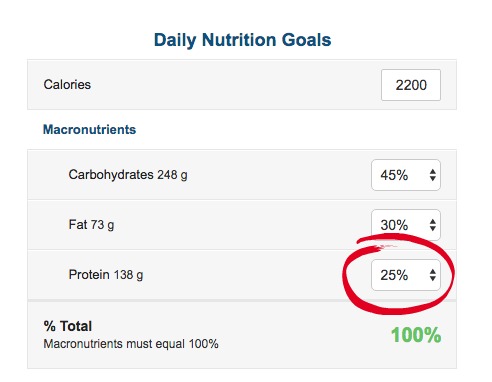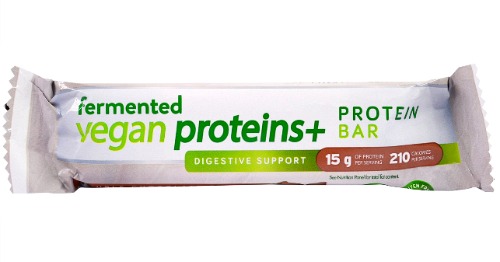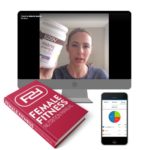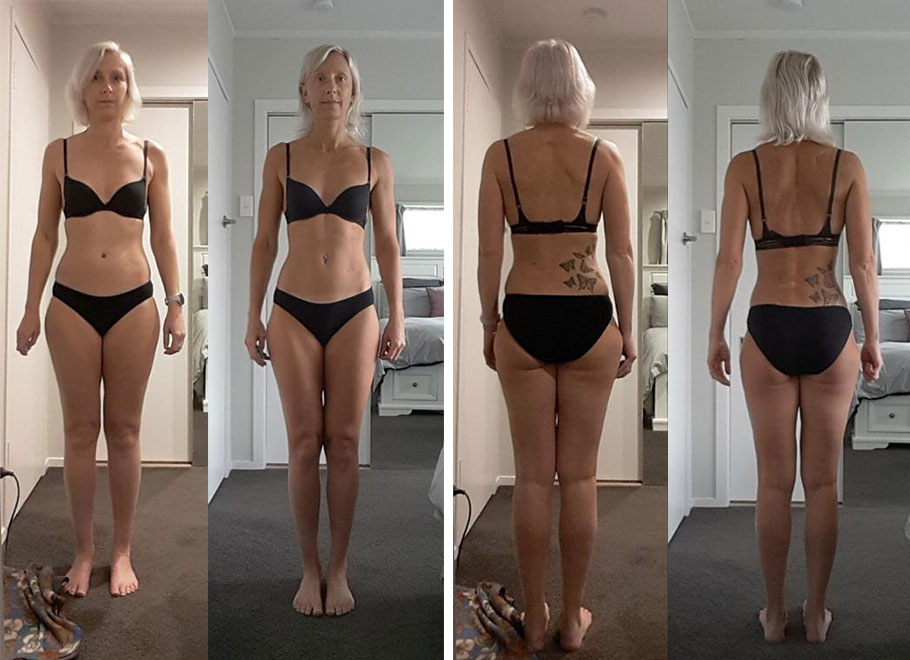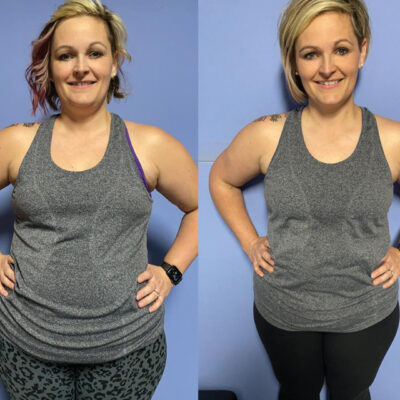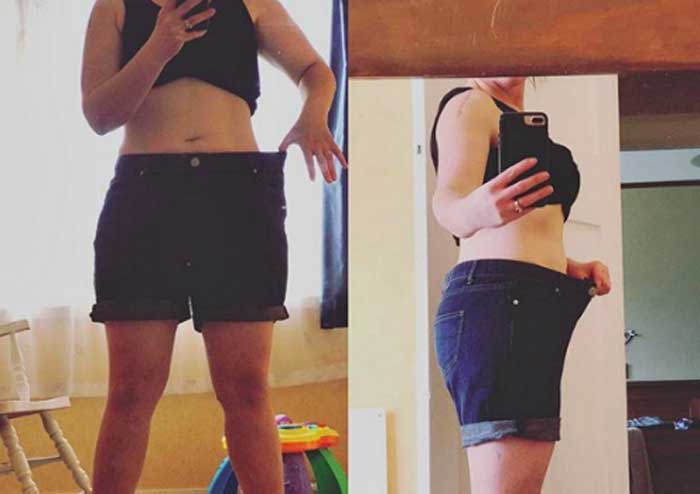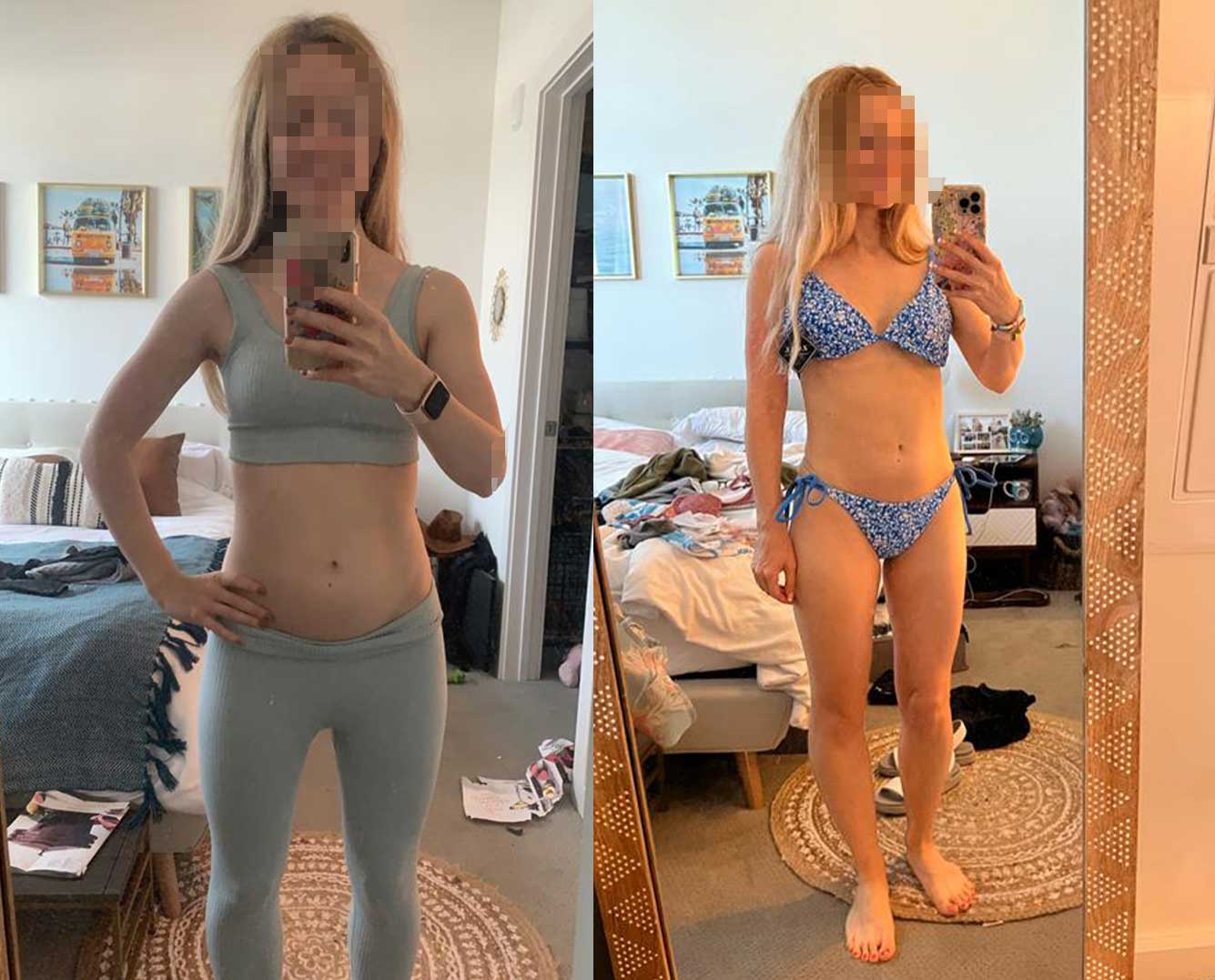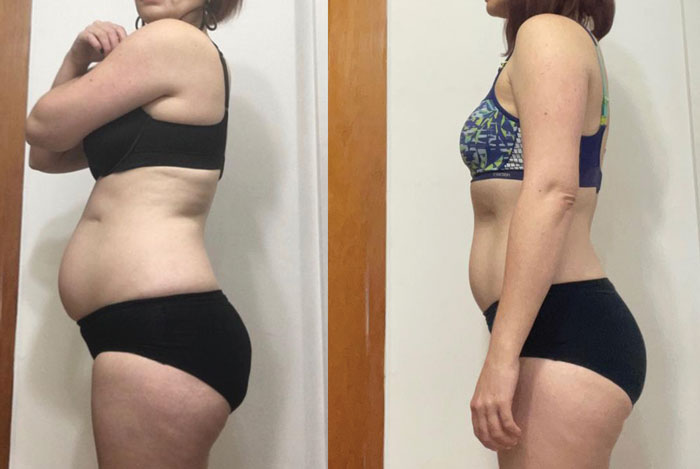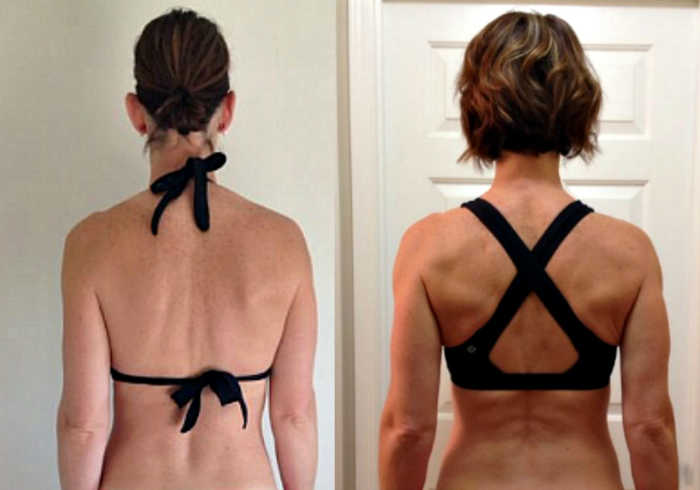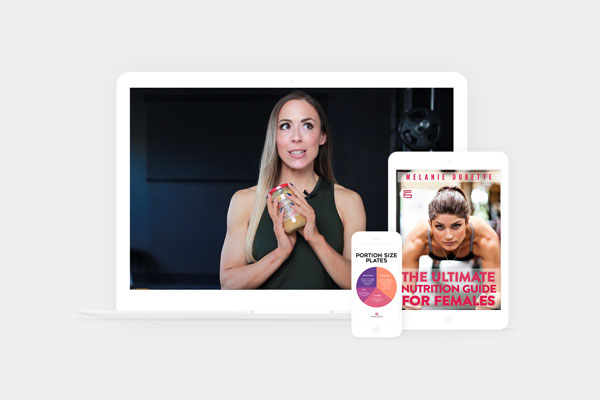Getting enough protein could be one of the most powerful things you do for your body. Protein is not only key for achieving a great looking body, it’s also important for your health and longevity. Forget wrinkle creams – getting enough protein is way more effective!
This article will help you figure out exactly how much protein you need and how to get it.
Why You Need More Protein
One of the first things I usually do with new clients is increase their protein intake. Why? Because I’ve found that the majority of women fall short of eating an optimal amount of protein and it makes such a big difference to their results when we increase it.
I’ve identified a typical pattern of eating that most women (who are trying to eat healthy) follow. These well-intentioned ladies start their day with muesli and yoghurt (possibly some fruit) and then a salad for lunch. If they snack, it will usually be fruit and sometimes nuts. Often dinner is the only time during the day that they’ll have a decent portion of protein. Sound familiar? That’s ok if it does. You just might need more protein.
So what do I mean by an optimal amount of protein? As you’ll learn in the next section, government guidelines for protein are different than what’s recommended by the fitness industry. Why is this? The government guidelines are created to ensure that you get the minimum amounts of required nutrients. It’s widely recognized that government guidelines are not about maximizing health and performance. Basically, they’ll keep you alive but they aren’t going to make you an awesome human being. However, that’s what I’m about so I’m going to help you figure out how to optimize your protein intake.
Here’s what happens when you eat more protein:
- Higher protein diets help you lose more fat and preserve muscle mass during weight loss.
- Eating protein after strength training will help your body repair and grow new muscle. It will help you recover and have more energy.
- Protein helps keep your appetite in check because it makes you feel fuller longer. Studies show that high protein meals increase satiety and lead to lower subsequent energy intake. That means you’ll eat less in between meals and it will be easier to stick to your diet.
- Protein is more thermogenic than carbs and fats (meaning your body needs more energy to digest it and there are less calories around after you eat protein to be stored as fat).
- Protein is essential for strong bones along with a high intake of fruits and vegetables, calcium and other important nutrients.
- Protein strengthens your skin, hair and nails from within. It’s essential to keep your skin firm and your hair and nails healthy. In fact, it’s probably going to do a whole lot more for you than your wrinkle cream.
- Protein is important for the production of enzymes, neurotransmitters and hormones. This means it’s going to make you feel better mentally. We all need that!
- High protein diets help mitigate sarcopenia – the natural loss of muscle mass as we age. Maintaining muscle as you age is one of the most important things you can do to ensure you have a good quality of life as an older adult.
How Much Protein Do You Need
The Recommended Daily Allowance (or Intake) in many countries, like Canada, Australia and New Zealand is .8g per kg of body weight. In New Zealand, the recommendation is slightly lower at .65g per kg up until the age of 70 when it increases to .8g. In Australia, the recommendation increases to .94g per kg after 70 in recognition that older adults need more protein.
However, many nutrition experts, especially those in the fitness industry, believe that these recommendations are too low. Based on current research, the International Society of Sports Nutrition suggests that a protein intake of 1.4 – 2.0g per kg per day is not only safe, it may improve the results you get from exercise. A lower intake of protein is not likely to be sufficient to repair from exercise or build muscle. Similarly the Dieticians of Canada recommend 1.2 to 1.7g per kg (0.5 to 0.8g per lb) body weight per day.
Older adults need even more protein to help prevent muscle loss as they age. Many experts now recommend over 2.0g per kg of body weight for people older than 65
An easier way to figure out how much protein you need
There’s an even easier way to figure out how much protein you need. In my practice, I prefer to figure out how many calories a client needs and then calculate protein intake as a percentage of their overall caloric intake. For most women eating up to about 2000 calories, I set protein at 30% of daily intake.
Setting protein intake at about 30% of daily caloric intake works for most women.
Here’s an example. Let’s say your goal is to lose weight and your calorie intake is 1600 calories per day. If we set protein at 30% of caloric intake, that leaves 70% to be divided up between carbs and fat. This means there’s a good balance between all three macronutrients which tends to work very well for weight loss, appetite control and maintenance of muscle mass. The following photo shows how this breaks down in grams.
If you are wondering about the previous calculations, this would work out to 1.7 grams per kg of bodyweight if this client weighed 70kg (154lbs).
For ladies who get to consume more calories, I would likely set protein at about 25% of their daily intake otherwise it gets towards the top end of recommended intakes. You can see what this looks like below.
In case you are wondering, research hasn’t been definitive as to there being any negative effects to high protein diets (with the possible exception of people who have kidney problems). However, I’m not a fan of getting all your protein from animal sources. Health-wise I think it’s better to mix things up. More about that in the next section.
How To Get More Protein
The only way to really know if you get enough protein is to weigh and track your food for a few weeks using an app like MyFitnessPal. Don’t just assume you get enough because in my experience most women under eat protein and don’t realize it until they start tracking their food. Weighing your food is important so you can better understand portion sizes. If you eat four to five times a day, you’ll need to get at least 20g of protein per meal to get 30% of your calories from protein (assuming you eat around 1600 calories or more).
You should aim to get 20 to 25g of protein per meal if you eat four to five times per day.
For example, you might eat three meals and one high protein snack. If you only eat three meals per day then your protein intake for each will have to be even higher. Make sure you get some protein around your workouts to optimize muscle building. Protein after a workout will also help with recovery and immunity.
The good news is that you don’t have to eat chicken all the time. It’s better to get your protein from a variety of sources anyway. Here are some of the most popular protein sources yielding about 20-25g of protein per serving:
- 100g meat or fish
- Eggs (4 egg whites or 2 eggs + 2 whites)
- Protein powder
- 250g light cottage cheese
- 200g tofu
When it comes to products like protein powder, cottage cheese and tofu these are rough estimates only and will vary depending on the brand and serving size. Also, likely you would have about half the amount of cottage cheese and tofu in a serving compared to what’s listed above. No one sits down to eat 250g of cottage cheese! That’s why weighing and tracking are important so you get an idea of how much you need to eat throughout the day.
While you can get protein from legumes and nuts, they are more carbs (legumes) and fat (nuts) than they are protein. That means if you rely on legumes for your primary protein source, you’ll have trouble hitting your protein requirements without consuming large amounts of carbs.
Often the easiest way for women to boost their protein intake is the addition of a protein powder and/or protein bars into their daily routine. The reality is most women don’t have time to prep four to five balanced meals everyday so protein powders and protein bars offer a convenient, quick solution.
Protein powders and bars are also a great alternative to animal protein sources. When choosing protein bars make sure they have at least 15g of protein, are low sugar and don’t contain artificial sweeteners.
The final advice I’m going to leave you with is to build your meal around protein. Fill up your plate with protein first – whether you are eating dinner, making a snack or eating out in a restaurant. For most women this is going to be a completely different way of thinking about eating and it will lead to better choices (ie. high protein snacks instead of sugary snacks on the go; steak and veggies instead of pasta).
Build your meals around protein.
It’s simple but it will make a huge difference to your body and health!
Find out more about working with me as your coach if you need some help figuring it all out!
Related Articles
How Many Calories Do You Need: Everything You Need To Know [Infographic]
Portion Sizes For Women: The Ultimate Guide

